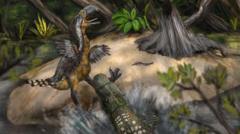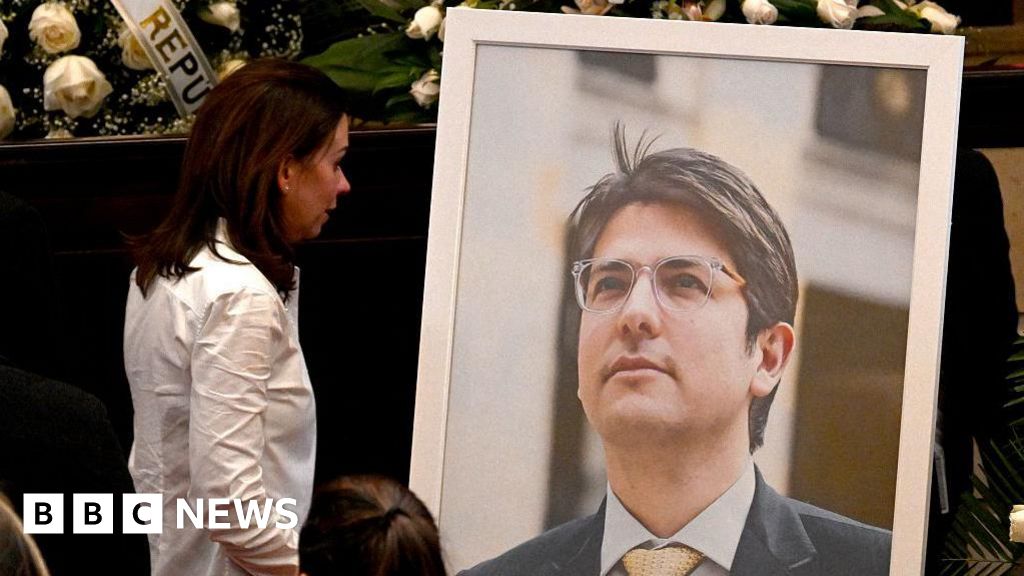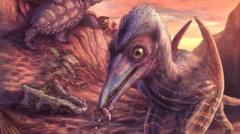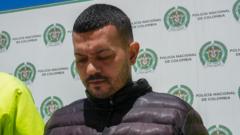The discovery of ancient fossils in Colombia’s Tatacoa Desert has provided remarkable insights into the predatory interactions of the Middle Miocene era. Researchers have revealed that a terror bird, a formidable predatory avian reptile, likely lost its life in a fatal encounter with a massive caiman-like reptile 13 million years ago. This revelation emerges from an analysis of bite marks on the fossilized leg bone of the terror bird, leading scientists to conclude that the encounter was a "battle to the death."
Published in the journal Biology Letters, this groundbreaking study highlights the matching of the distinctive teeth marks found on the leg bone to those of Purussaurus neivensis, a crocodile-like creature that could reach lengths of up to five meters. The research team, working in collaboration with local fossil collector César Augusto Perdomo, utilized advanced 3D digital scans to reconstruct the gruesome encounter and assess the size and shape of the teeth impressions.
The terror bird, towering at about 2.5 meters, was a dominant figure in its ecosystem, wielding powerful legs and a piercing, hooked beak to capture its prey. However, the absence of healing signs in the bite wound suggests that the bird either succumbed during the fight or was scavenged post-mortem. Lead researcher Andres Link from the Universidad de Los Andes explained, "That was the last day that bird was on this planet—then a piece of its leg bone was found 13 million years later."
Historically, the Tatacoa Desert was a lush habitat, rich in diverse life forms, contrasting sharply with its current arid state. This environment, characterized by swamps, served as a critical site for the preservation of fossils, including that of the terror bird. The analysis of the bone marks not only illustrates the precariousness of life for apex predators in that era but also enhances our understanding of ancient ecosystems and their intricacies.
Dr. Link emphasized that each fragment of fossilized remains enhances our knowledge of Earth's historical biodiversity. "Every piece of a body helps us to understand so much about life on the planet in the past," he stated, underscoring the importance of these discoveries in piecing together the story of prehistoric life.
Published in the journal Biology Letters, this groundbreaking study highlights the matching of the distinctive teeth marks found on the leg bone to those of Purussaurus neivensis, a crocodile-like creature that could reach lengths of up to five meters. The research team, working in collaboration with local fossil collector César Augusto Perdomo, utilized advanced 3D digital scans to reconstruct the gruesome encounter and assess the size and shape of the teeth impressions.
The terror bird, towering at about 2.5 meters, was a dominant figure in its ecosystem, wielding powerful legs and a piercing, hooked beak to capture its prey. However, the absence of healing signs in the bite wound suggests that the bird either succumbed during the fight or was scavenged post-mortem. Lead researcher Andres Link from the Universidad de Los Andes explained, "That was the last day that bird was on this planet—then a piece of its leg bone was found 13 million years later."
Historically, the Tatacoa Desert was a lush habitat, rich in diverse life forms, contrasting sharply with its current arid state. This environment, characterized by swamps, served as a critical site for the preservation of fossils, including that of the terror bird. The analysis of the bone marks not only illustrates the precariousness of life for apex predators in that era but also enhances our understanding of ancient ecosystems and their intricacies.
Dr. Link emphasized that each fragment of fossilized remains enhances our knowledge of Earth's historical biodiversity. "Every piece of a body helps us to understand so much about life on the planet in the past," he stated, underscoring the importance of these discoveries in piecing together the story of prehistoric life.

















